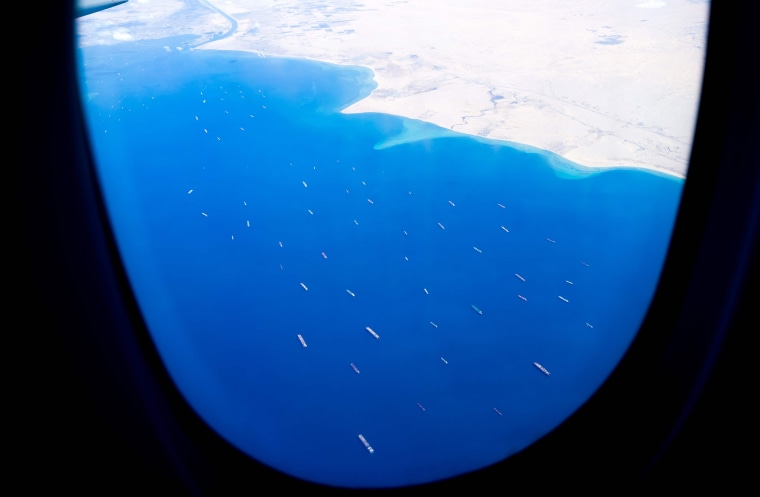A stuck ship in the Suez Canal cost the global economy up to $10 billion in one week. And it could have been much more. It was a disaster waiting to happen, and it could easily happen again — in the waters near Iran, in the Panama Canal, or in the Turkish Straits.
There are only so many nautical passageways and ports in the world. To ease the congestion, you can either build new lanes or find new routes.
E-commerce giants like Amazon and Walmart have transformed global shipping into a $4 trillion-a-year industry. Put simply: There are more ships and the ships are getting bigger. Unfortunately, our maritime highways haven’t always kept up with the traffic. There are only so many nautical passageways and ports in the world. To ease the congestion, you can either build new lanes or find new routes. The U.S. should do both.
On Wednesday, President Joe Biden will roll out the details of his new infrastructure plan. The plan will, of course, focus on America’s roads, tunnels, bridges and railways. But if we want to avoid another Suez situation, there should also be significant money dedicated to global infrastructure. It’s the only way to keep pace with our competitors and ensure American businesses can trade safely and swiftly with the rest of the world.
China is ahead of the game. Over the past decade, the Chinese government has pursued several expensive alternatives so it would no longer be reliant on the narrow Strait of Malacca between Indonesia and Singapore. China has long feared, with validity, that the strait could become a chokepoint leaving it bereft of the oil it needs to thrive.
That’s why China built Pakistan’s Gwadar port to receive oil from the Middle East and then transmit it across Asia. China also built oil and gas lines across Myanmar, constructed the Khorgos Gateway in landlocked Kazakhstan and, perhaps most creatively, proposed cutting through the narrowest part of Thailand to create a brand new canal.
Though not all these efforts will be successful, a few are already paying off. More than 60 countries are participating or interested in pursuing an infrastructure deal with China. Think of it like a portfolio. China is diversifying, while the U.S. and the rest of the world has put all its capital in just a handful of assets. This week one of those assets, the Suez, tanked. The blockage risked triggering price hikes on everything from gas to toilet paper. Hoping it doesn’t happen again is a bad investment strategy.
The question is, where can the U.S. put its money? After all, land routes in Central and Southeast Asia will do America little good. The answer is to look north — as Russia has. This week, Russian President Vladimir Putin offered up the Arctic as a new option for ships looking to avoid the current bottleneck in the Middle East and wary of traversing the Cape of Good Hope for fear of pirate ships.
Putin is on to something. Our melting polar ice caps have opened up previously hidden sea lanes. Some global warming models suggest that for a few months during the summer, the region may be ice free, opening up multiple shipping lanes and channels, which would shorten routes by almost 20 days compared to the Suez Canal.
Russia is seizing on the opportunity and deploying nuclear-powered icebreakers to help plow a path. China, too, has already started making plans for a “polar silk road.” But the U.S. has largely watched from the sidelines. If we let other countries define new routes of international commerce, our economy could be held hostage at a moment’s notice.
It’s not as if we didn’t see the problem coming. In 2016, the U.S. Army Corps of Engineers considered building a deep port in northern Alaska but deemed the price tag too high. Last year, Congress authorized a new port to be constructed in the Arctic for military purposes, but it’s unclear whether any construction could support major commercial vessels like the ones trying to traverse the Suez.
The good news is that the U.S. doesn’t have to do this alone. Allies in Europe and Asia are eager for a multilateral approach to commerce in the Arctic. Although negotiations have stalled in the past, now is the perfect moment for the new administration to re-energize the Arctic Council — the international group comprising all eight nations with territorial claims in the region (China, with a border 1,800 miles from the Arctic, has claimed observer member status.) Given recent events, it would be smart for the U.S. to ask for a meeting of the council this spring.
During the meeting, the U.S. should signal its intent to ratify the U.N. Convention on the Law of the Sea, a treaty that creates guidelines for how nations use the world’s oceans. America is, embarrassingly, one of only a handful of nations that has refused to adopt the protocol. While some argue ratification would limit U.S. sovereignty, there is a bipartisan push underway arguing that the treaty gives the U.S. a seat at the table in negotiating new rules for international commerce.
A shift in strategy from the Biden administration would signal to the world that America will take a collaborative approach on these complicated issues. New infrastructure investments will show America can help its own companies and the rest of the world at the same time. Together, it will be a reminder that a strong American presence on the seas creates more secure and prosperous trade routes for every country, regardless of which flag their ship flies.



